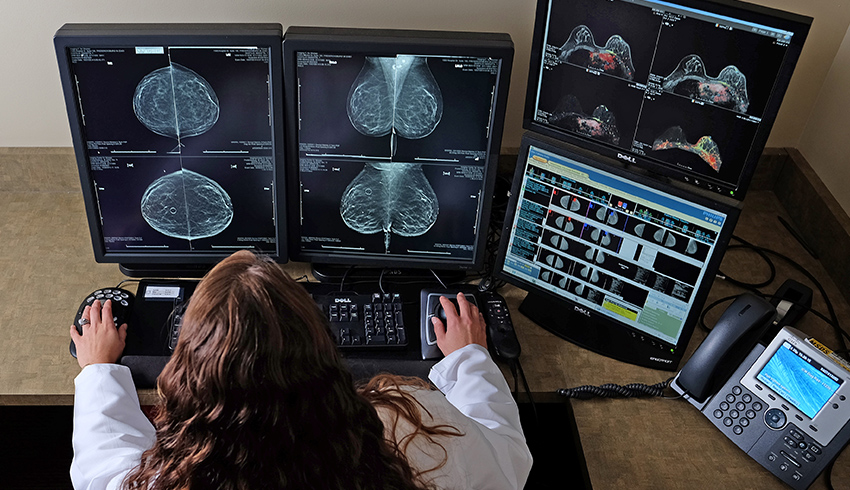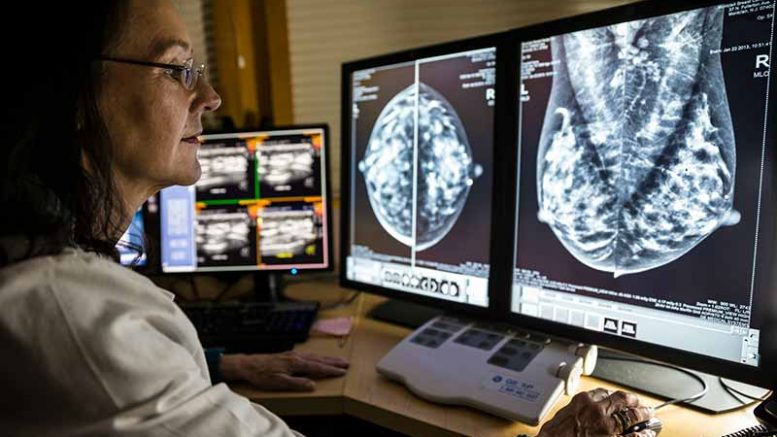Considering how worrying the increasing cancer rates are lately, people are more excited to hear about technological advancements in medicine. Breast cancer was a priority lately because the number of new invasive breast cancer cases in the past year is tremendous. Around 300.000 new cases of breast cancer were diagnosed in 2018 in the U.S. alone. The statistics are truly scary, considering that around 1 in 9 women may develop invasive cancer during her lifetime.
This is the reason why researchers focused on finding better ways to detect breast tissue abnormalities early before cancer develops. Technology played the most important role in this sense and 3D mammography was finally launched. Some hospitals are now equipped with advanced technology, able to deliver 3d mammograms that doctors can interpret easier. Of course, advanced training might be required to use the respective technologies, but doctors are working on that.
2D vs 3D
3D mammography can detect multiple types of mammary cancer, which reduces the number of erroneous diagnoses, which often happen in the case of 2D mammography. This fact was proven during clinical trials and the statistics say that compared to 2D mammography, the 3D one increases the detection rate by 41%. The 3D imaging technique was approved by several medical institutions and several studies related to this topic were published in the Journal of the American Medical Association. Comparing 3D and 2D mammography also led to a clear conclusion – 3D imaging detects more cases of invasive cancer on time, while also reducing the costs involved in running tests. In many cases, women opt for a 2D mammogram, pay for it and the result turns to be a false alert, which involves spending the same amount of money once again, on a new set of tests.
The new 3D mammography method combines the traditional digital mammography with imaging through tomosynthesis. This is why 3D mammography is sometimes called tomosynthesis imaging. This combination of methods allows for a more detailed and focused image of the mammary cells. The technique doesn’t differ tremendously from 2D mammography in terms of how long it takes to perform the procedure. It takes a few seconds longer than in the conventional case to discover a breast cancer. The chances of survival of the patient are directly determined by how fast cancer or abnormalities are discovered.
A more in-depth view of 3D mammography

As mentioned before, the features of 3D mammography make it the center of attention in the medical world, being one of the cutting-edge technologies used at the moment for screening and diagnostic cancer in early stages. It is important to mention that 3D mammography requires just the same amount of X-radiation as a 2D mammography would. Often, women who opt for a 2D mammography has to perform more than one single screening for a sure result, which leads to doubling the time exposed to X-radiation. This is no longer the case, considering the reduce occurrence of false-positives in the case of 3D mammography.
By obtaining three-dimensional breast images, 3D mammography allows for a reduction of tissue image overlapping, so cancerous lesions are clearly visible. It is a great step ahead considering that dense breasts have an increased risk of containing cancerous cells. The results are thus more detail-sensitive and the irradiation dose is lower while obtaining a higher-resolution image.
Procedure
It is important to know that 3D mammography should be performed in a certain period of the month when the breasts are not in any way congested and the sensitivity is lower in that area. Before the procedure, the doctor usually discusses with the patient about breast surgery in case of benign or malignant lesions, hormonal treatments, previous investigations and so on. The procedure is not painful, but discomfort may be felt due to the compression of the breast. The procedure doesn’t last long, it takes a few minutes or less depending on the area verified. Also, there is a very low chance of the patient needing to repeat the procedure.
Benefits
As a conclusion of the information mentioned above, here are the benefits of opting for 3D mammography instead of 2D mammography:
- Significantly decreases the number of false-negative cancers hidden in the depth of the breast tissue. It detects certain formations or types of lesions more efficiently compared to simple digital mammography or 2D mammography, especially in dense breasts, which are also on the list of an increased risk of developing breast cancer in the future
- Significantly decreasing the number of false-positive cancers (formations that would appear to be cancer by “overlapping” some pictures but actually represent normal breast tissue) and virtually allow for a considerable improvement in the diagnosis rate
- Allow patients to avoid extra check-ups or even biopsies and unnecessary surgery
Contraindications
There are no specific contradictions when it comes to 3D mammography, but there are certain rules that must be respected so that the result is not altered. Until a woman turns 40, the breast tissue is dense, so the information provided by a mammogram is reduced. 3D mammography in Queens seems to be the most looked for service for women in this age range. In this case, there is a benefit-risk ratio that must be taken into account, as the balance inclines towards risk. This is why women over the age of 40 should make an appointment with their doctor once a year. The new threshold in early identification of breast cancer, 3D mammography is a technological advancement that all people must take advantage of, to reduce the number of deaths caused by cancer. Less toxic chemotherapy, less surgical techniques and many other benefits – all of which result in a better outcome and a visibly improved patient quality of life.
One of the clinics that already adopted 3D mammography technology is Emu Health, and whoever is interesting in testing the amazing power of this technological advancement can reach out to them using the following contact details:
Emu Health-Medical Clinic
83-40 Woodhaven Blvd, Glendale, NY 11385
(718) 850-4368



Be the first to comment on "Technological advancements in medicine: 3D mammography"